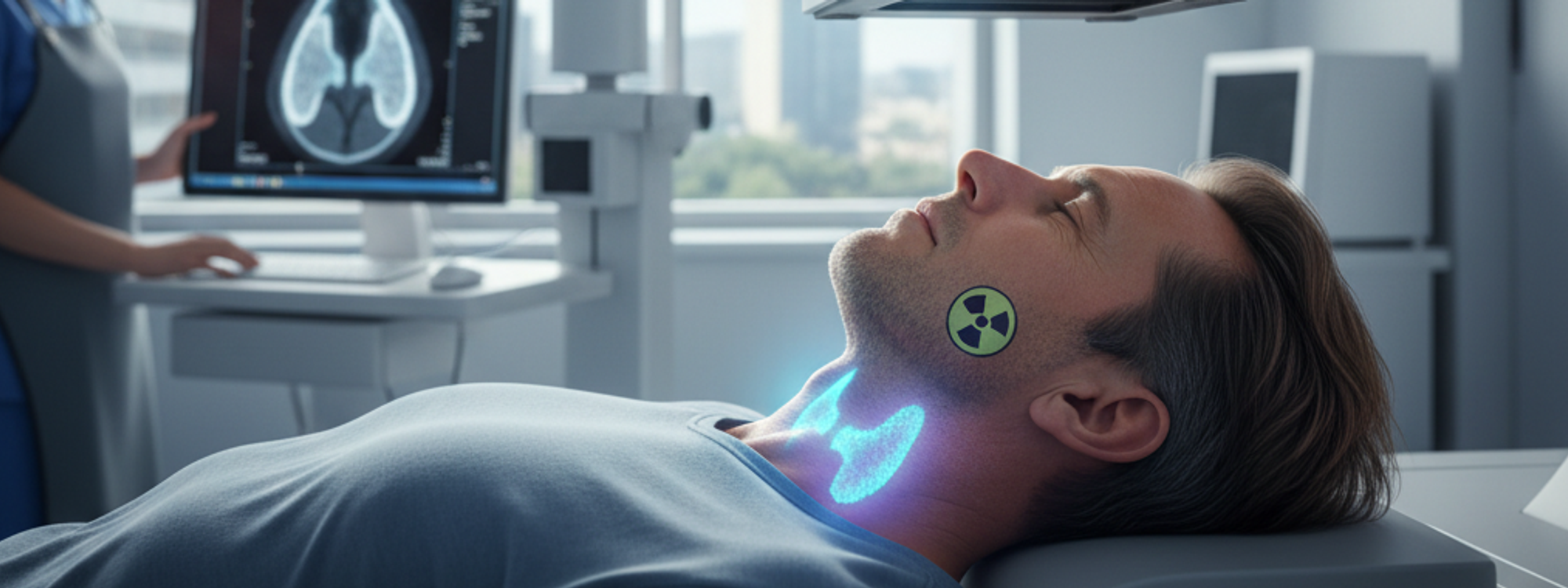
Thyroid scintigraphy, also known as a thyroid scan, is a diagnostic procedure that involves the use of radioactive tracers to assess the function and structure of the thyroid gland. It is a valuable tool in detecting a variety of thyroid disorders.
Generally, a thyroid scan is a straightforward and painless procedure. The radioactive tracer, also known as a radiopharmaceutical, is often administered intravenously. The doses of the isotope used are very low and do not pose significant risks to the patient.
However, it's important to note that this procedure is contraindicated during pregnancy. As a precautionary measure, women of childbearing age typically undergo this scan within ten days following the onset of their last menstrual cycle to eliminate the risk of pregnancy.
During lactation, some radioactive substances can pass into breast milk. Therefore, the timing of the scan may be adjusted or breastfeeding may be temporarily or permanently suspended, depending on the radiopharmaceutical used and the discretion of the nuclear medicine specialist.
The procedure can also be performed on children, with the amount of drug used adjusted according to body weight. It can be repeated over time to monitor the progression of a disease.
The tracers used, even those based on iodine, should not be mistaken for contrast agents. They usually do not cause discomfort or allergic reactions, making the procedure safe even for individuals with iodine allergies.
The procedure starts with a preliminary visit to review the patient's medical history and any existing documentation on the current condition. This is followed by a physical examination of the neck.
The radiopharmaceutical is then administered, either intravenously or orally, depending on the type used. There is a waiting period after the administration to allow the radiopharmaceutical to distribute into the thyroid. The duration of this waiting period varies depending on the type of radiopharmaceutical used.
Following the waiting period, images are captured and interpreted. The duration of this process can range from a few minutes to half an hour, depending on whether the scan is limited to the thyroid or extends to the whole body. Throughout the procedure, the patient lies on a bed with their neck in hyperextension, having removed any metal objects.
After the scan, the patient can resume their regular activities without any special precautions. However, they may be advised to increase their fluid intake to facilitate the elimination of the radiopharmaceutical. For the first few hours following the scan, the patient should avoid close contact with young children and pregnant women as a precautionary measure.
Typically, no special preparation is required for a thyroid scan. However, the doctor may advise the suspension of any medications that could interfere with thyroid function. It is also crucial to disclose any recent exposure to external sources of iodine, such as iodized salt, hair dye, iodized toothpaste, iodine-based disinfectants, multi-mineral supplements containing iodine, or recent exposure to radiological tests with iodine contrast agents.